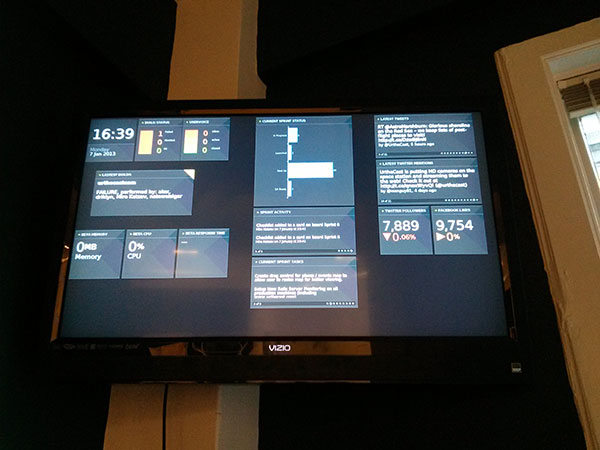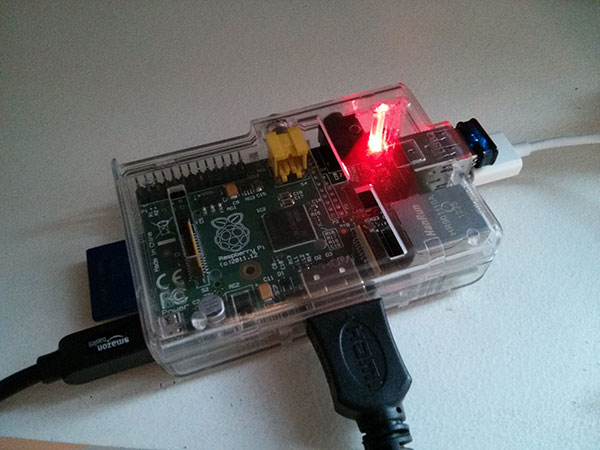Here are five steps to follow if you want to start using a RaspberryPi to power a company dashboard. I’ve just finished putting this together at my office. We’re using Geckoboard for the web interface:


0: Make sure your RaspberryPi is fully updated
Before you get started I highly recommend you follow my RaspberryPi Quickstart guide to get your RaspberryPi updated to the latest OS and Firmware. That post also includes links to the case and peripherals I purchased for this project.
1: Install Chromium
First, you’ll want to install Chromium on your RaspberryPi. We’ll be using Chromium to load the dashboard. I’ve also included the ttf-mscorefonts-installer package so things render nicely.
sudo apt-get install chromium ttf-mscorefonts-installer
2: Boot into X11 automatically
You’ll want to make sure your RaspberryPi immediately boots into X11.
sudo raspi-config
Scroll down to boot_behavior and hit enter. Make sure “Yes” is marked and hit enter again.
You’re done here, so scroll to Finish (right arrow key) and hit enter.
3: Start Chromium on boot
Third, you’ll want to make sure Chromium starts in kiosk (full screen, no user interface) as soon as your RaspberryPi boots up.
Create (or modify) ~/.config/lxsession/LXDE/autostart and add the line:
chromium --kiosk http://url_to_your_dashboard.com --incognito
Kiosk mode boots Chromium into full screen mode, by default. Incognito mode prevents a “Chrome did not shutdown cleanly” message from appearing on the top if the RaspberryPi loses power.
4: Make sure the screen does not go to sleep
Dashboards aren’t very useful if the screen goes into standy after ten minutes.
Edit /etc/xdg/lxsession/LXDE/autostart and make sure the @xscreensaver line is commented out. In addition, we’ll be adding three options that prevent the screen from going blank:
#@xscreensaver -no-splash
@xset s off
@xset -dpms
@xset s noblank
I also needed to modify /etc/lightdm/lightdm.conf. Add this line to the [SeatDefaults] section:
xserver-command=X -s 0 dpms
5: Hide the mouse cursor
There’s no reason to keep the mouse cursor stuck in the middle of the screen. We’ll use the unclutter utility to hide it after boot.
sudo apt-get install unclutter
You’ll need to add this to your ~/.config/lxsession/LXDE/autostart file:
unclutter -idle 0
Enjoy!
Reboot your RaspberryPi and it should:
- Boot directly into X11
- Start Chromium in kiosk mode and load up your dashboard
- Prevent the screen from going to sleep after 10 minutes
- Hide the mouse cursor
Please let me know if you have any questions or comments.